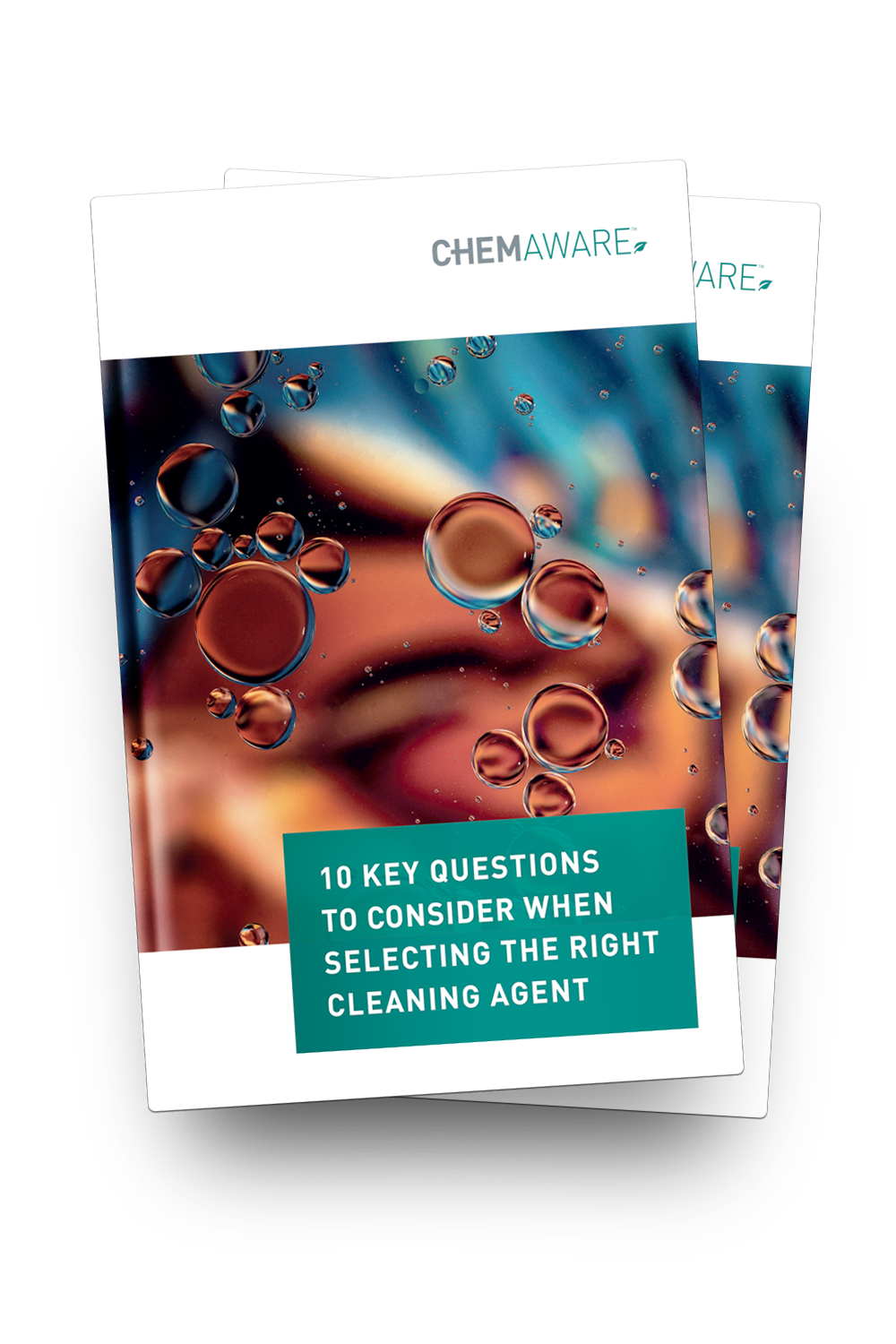
In many manufacturing sectors, metal cleaning is critical to quality assurance.
Insufficiently cleaned parts can affect the quality of many subsequent industrial processes such as coating, welding, bonding and assembling.
Often people ask: “What's better – solvent or aqueous cleaning?” The answer is: it depends.
Making the right decision depends on a myriad of factors – technical, economic, and safety and health. The optimal decision should work to balance those needs.
In our guidance paper, we have highlighted 10 key questions you should ask in order to identify the right cleaning agent for your process. Questions such as:
1. What are your cleaning quality requirements?
In order to achieve optimal cleaning results, you need to consider two different kinds of soils: 1) particle contaminations, including their size, numbers and types and 2) the sort of filmy contaminations.
Aqueous cleaning agents have a density of approx. 1g/ml. Solvents, in comparison, may have a higher or lower density. “Heavier” cleaning agents are effective in removing particulates that cannot be readily dissolved. They can literally “push” or ”float away” particulates and lift them off the surface.
At the same time, different industrial applications require varying degrees of surface energy of the metal surface, which is influenced by filmy contaminations.
With nitriding, for example, a higher surface energy is required than with standard coating or assembling. The required surface energy should therefore match the ability of the cleaning agent. For precision cleaning where required surface energy can range anywhere from 38 mN/m to approx. 60 mN/m, both aqueous-based cleaning and solvents are capable of fulfilling the requirement.
|
2. What is the affinity of the cleaning agent to the soils? Effective cleaning is based on the principle “Equal dissolves equal”. For water-based types of contaminations such as coolant and lubricant emulsions, aqueous cleaning agents are typically the first choice. When removing mineral oil based, non-polar contaminations, such as machining oils, greases and waxes, solvent will commonly be the preferred cleaning agent. Nowadays modified alcohols are also available; |
 |
3. What metal types are you cleaning and how are they configured?
In water-based processes, cleaning agents which can be acidic, neutral or alkaline, are usually matched to specific metal types. Simultaneous cleaning of different metals can therefore be problematic and this can result in compatibility issues and in worst case: corrosion.
Solvents in comparison have universal compatibility with metals. If the component parts are tiny or have complex geometry or small crevices, solvent is often recommended due to its lower surface tension and viscosity which makes it easy to wet into and evaporate out of tight spaces.
With water-based cleaning, even tiny traces of residue moisture could give rise to issues such as challenges in subsequent production processes, corrosion, or growth of bacteria and related
bioburden issues.
Further explanations and details are provided in the full guidance paper. If you want to ensure metal cleaning success for your critical applications, download the paper now.